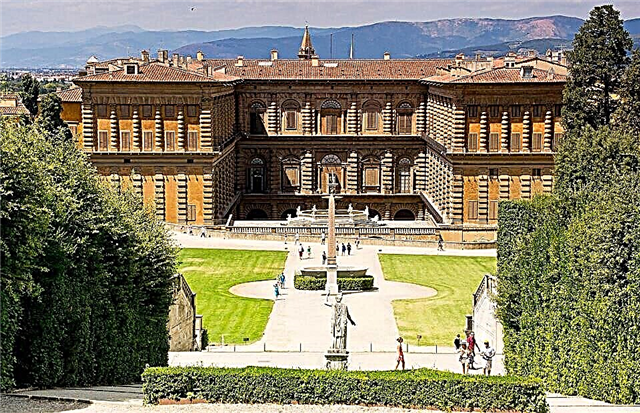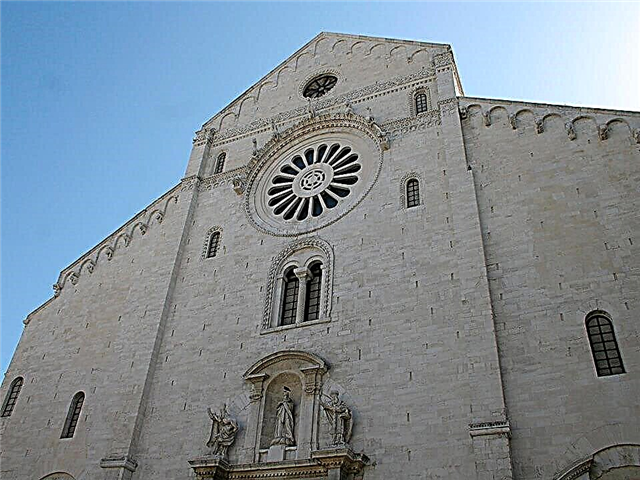Address: Russia, Pskov region, Pskov, Oktyabrsky pr., 9
The first mentions of the wooden church: 1487 year
Shrines: Ark with particles of the relics of the holy Great Martyr Anastasia the Patterner, Saint Fausta - the mother of the saint, the holy martyr Chrysogonus of Aquileia - the teacher of the saint, the ark with a particle of the relics of the holy Great Martyr Paraskeva Friday, a copy of the Turin Shroud, a copy of the Turin Holy Shroud and the Crucifixion of the Holy Shroud Of the Lord, a reliquary with a particle of the Tree of the Lord's Cross and a particle of the Title of the Lord's Cross, a reliquary with a particle of a thorn in the crown of thorns of the Lord, a cross with a particle of the Life-giving Tree of the Lord's Cross and a particle of the Title of the Cross of the Lord, an ark with a particle of the relics of St. Mary of Egypt, an ark with a particle of the relics of St. Andrew of Crete , an ark with a particle of relics and slippers of St. Spyridon, Bishop of Trimyphus, the Wonderworker, an ark with a particle of the relics of the holy great martyr and healer Panteleimon, an ark with a particle of the relics of St. Alexander of Svir
Coordinates: 57 ° 48'53.6 "N 28 ° 20'19.2" E
Cultural heritage site of the Russian Federation
Content:
To the south of the famous Pskov Krom there is a temple consecrated in honor of the great martyr Anastasia the Patterns. In ancient times, around this church there was a quarter where artisans-blacksmiths lived - Kuznechnaya Sloboda, therefore it is often referred to as “the church in Kuznetsy”. Despite numerous renovations, the ancient temple has retained its original proportions and looks very harmonious. Many art critics consider it one of the most beautiful in the city.

View of the church from the street. Nekrasov
Who was Anastasia the Patterner
At the beginning of the 20th century, it was believed that the church in Kuznetsy was dedicated to two saints - Anastasia Rimlyanka and Anastasia Uzoreshitelnitsa. They both lived in Rome and died defending the Christian faith. However, Pskov local historians found out that the church was originally consecrated in honor of Anastasia Uzoreshitelnitsa.
It is interesting that a separate temple of Anastasia the Roman woman has been preserved in Pskov. This is a small picturesque chapel built in 1911 by the architect A.V. Shchusev. And it stands on the left bank of the Velikaya River, next to the Olginsky Bridge.
Anastasia Uzoreshitelnitsa, after whom the church in Kuznetsy is named, lived in the 4th century, during the reign of the Roman emperor Diocletian. She was born in the capital of a great empire, in the family of a senator. Many Christians were then kept in Roman prisons, and Anastasia secretly visited them, helping with food and treatment. Then she began to wander, trying to help the imprisoned Christians everywhere. Anastasia was called the pattern-maker for her selfless labor, since she gave the suffering not only food and medicine, but also freed them from the bonds of despair, doubt and fear.
When the authorities learned that Anastasia adheres to the Christian faith, she was brought before the emperor. Diocletian commanded the high priest to persuade the Christian to the pagan faith or to execute her. The high priest tried to touch Anastasia, but suddenly became blind. For some time, Anastasia was free and could continue her ministry to imprisoned Christians.
However, she soon found herself in prison again and was tortured by hunger for two months. Seeing that the Christian woman was not broken, the Roman authorities put her together with other prisoners on a ship and decided to drown them in the sea. However, the plan failed. Then the brave Roman woman and other Christians were publicly executed. The Orthodox Church considers Anastasia the Patterner a Great Martyr and celebrates a tribute to her memory on January 4.
Temple history
The first wooden church in honor of the saint revered by believers appeared in Pskov in 1487. It was set up as a "vowed" one day after a long plague epidemic ended in the city. In the Middle Ages in Russia and on the territory of Europe they still did not know how to deal with the "pestilence", therefore, terrible diseases mowed down the population of cities and villages by tens of thousands. It is curious that in the pre-revolutionary local history literature, the Pskov legend was repeatedly published that the temple was erected by Vasily Dol in memory of his wife and daughter, who were named Anastasia.

View of the church from Oktyabrsky Avenue
There is no information about the time when the wooden building was replaced by a stone church, but it is known that in the first half of the 16th century it was already standing. The Pskov Chronicle for 1538 tells about a big fire, during which 12 churches burned down. The temple in Kuznetsy was also damaged. The roof collapsed on it, and four people died in the fire.
In 1639, a side-altar was added to the church from the north and consecrated in honor of Paraskeva Pyatnitsa. When the church reform began at the end of the 18th century, they wanted to close the dilapidated church. However, it was preserved and attributed first to the Church of Vasily on Gorka, and then to the nearby Novovoznesenskaya church.
At the beginning of the 19th century, the question of closing the church arose again, but the parishioners loved their church so much that they sent a petition to the emperor. Due to their intercession, it was decided not to touch the old building and to support it with private donations. With the money collected by the parishioners, the walls were plastered, the floors were changed, a new carved iconostasis was ordered, and the old wooden roof was replaced with an iron one.
In the 1880s, the church of Anastasia the Patterner was reconstructed again. Several stoves were installed in it, and, thanks to heating, church services began to be held not only in the warm season, but also in winter. In addition, the builders closed the bell tower porch with frames and doors on three sides, covered the altars with iron and replaced the dilapidated dome with a new, but smaller one.
At the beginning of the last century, following the general progress in the temple, electric lighting appeared. The priests who served in the church did a great deal of public work. They collected relics of local lore, studied the history of Pskov, worked in the city Statistical Committee and organized Singing festivals.
Until 1932, regular services were held in the church, but then the city Union of Militant Atheists made sure that the way to the church was closed for believers. During the Great Patriotic War, when the Germans occupied Pskov, and then there were battles for its liberation, the ancient temple was damaged. The roof, outer walls and church interiors were damaged by shots and shells.
In 1960, the church was recognized as an architectural and historical monument and was taken under state protection. The old building was repaired and given to the regional scientific library, which for a long time used it as a book depository.

View of the church bell tower
In 2004, the church was handed over to the parish community. However, the library could not find a suitable room for its books, and the religious building was finally vacated only in 2006. After that, a period of repair and restoration work began. The builders altered the power supply and heating systems in the church, completely re-poured the old floors, whitewashed the walls, replaced the windows and installed a new iconostasis. Church services were resumed here in 2007, and two years later the chapel consecrated in honor of Paraskeva Pyatnitsa was restored with the money raised.
Architectural features
The ancient temple has the status of a monument of federal significance and embodies the best traditions of Pskov temple architecture. According to the ancient architectural canons, the facades of the main volume and the side-altar are divided into parts by blades, and the apses of the altar and the drum are decorated with a pattern with a curb and a runner.
The church can be considered two-tier, as it stands on a powerful vaulted basement floor.The quadruple rests on four pillars and has three apses. It is crowned with one dome, installed on a high light drum. The quadrangle is covered with a four-pitched roof, while the gallery and aisle have flat roofs.
The tiered bell tower, the architecture of the vestibule and the roof were made in the tradition of classicism during the reconstruction of the church in the first half of the 19th century. The stone two-level bell tower replaced the old temple belfry in 1819. It was built with money donated by a wealthy landowner and owner of the Governor's House, Valueva. The bell tower has open belfries and a dome with a high spire.
Current state and visiting regime
Today, the Church of Anastasia Uzoreshitelnitsa is an active Orthodox church, and its doors are open for believers and tourists every day from 9.00 to 19.00. Services are held here at 9.30 and 17.00.
The church contains a copy of the Turin shroud, a medallion containing a thread from the original shroud, arks with particles of the relics of Anastasia the Patterner, Mary of Egypt, Alexander Svirsky, the healer Panteleimon and Paraskeva Friday, as well as particles of the Life-giving Tree of the Lord's Cross. The feast day in the temple is celebrated on January 4.

View of the south facade of the church
How to get there
The church is located in the central part of the city, on the right bank of the Velikaya River (9 Oktyabrsky Prospect). It can be reached by buses and fixed-route taxis (stop "Children's Park"). From the Pskov railway station (station "Pskov-Passazhirskiy") it is not difficult to reach the temple on foot. You need to go along Vokzalnaya Street and Oktyabrsky Prospect (2.2 km).
If you use a private car, from the southeastern outskirts of Pskov you should turn off the Leningradskoe highway onto the A 212 highway leading to Izborsk, and drive along it to the city center.











